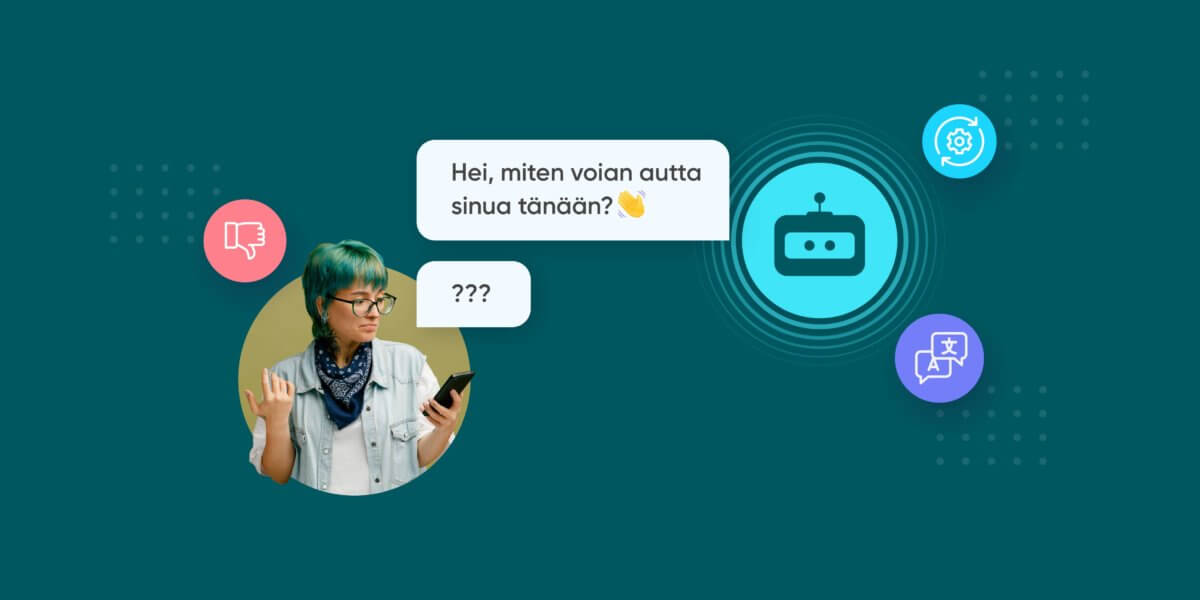Understanding Buyer Personas: Unveiling the Power of Personalised Marketing

Understanding Buyer Personas: Unveiling the Power of Personalised Marketing
Welcome to the dynamic realm of personalised marketing, where every connection is tailored to captivate your audience. If you’ve ever wondered about the impact of personalization, let’s dive into a revealing insight: A McKinsey study unveils that a staggering 78% of consumers prefer brands that curate content just for them.
Now, asserting that personalised marketing is more vital than ever is an understatement. In this dynamic market, crafting campaigns that resonate with your audience’s unique preferences has become the cornerstone of success.
To embark on this journey of personalised campaigns, the key lies in understanding your audience’s persona – their likes, dislikes, age, and more. In simpler terms, the first crucial step is creating a buyer persona.
Join us on this exploration of the ever-evolving marketing and sales domain, where the concept of buyer personas emerges as a vital tool. This blog unveils the significance of comprehending buyer personas, guides you on creating them, and delves into leveraging these profiles to elevate your marketing strategies.
Buyers Persona Decoded
Buyer personas represent semi-fictional characters that encapsulate the key attributes of your ideal customers. They provide a holistic understanding of your audience, guiding marketing and sales efforts.
A buyer persona serves as a valuable tool in understanding your ideal customer, combining market research with real data from your existing customer base. By delving into demographics, prior purchasing behavior, motivations, and various quantifiable attributes, a buyer persona provides a comprehensive representation of your target audience. This insightful tool enables businesses to tailor their marketing campaigns effectively, increasing the likelihood of reaching potential customers. This would encompase the age, qualification, demographic, like and dislikes.
Let us take an example: Victoria, a 26-year-old, single female with a Bachelor’s degree in Accounting, working as a Virtual Assistant in the business services industry. Her goals, values, preferences, and challenges form a detailed profile that guides strategic decisions.
Victoria’s persona reflects not only her personal and professional background but also her goals, values, and even personal preferences. As she navigates her career path, seeking growth and efficiency, understanding such buyer personas becomes pivotal in crafting strategies that resonate with individuals like Victoria. This comprehensive approach to creating buyer personas proves instrumental in aligning business goals with the needs and aspirations of the target audience, ensuring a more personalized and effective marketing approach.
Importance of Buyers Persona in Marketing and Sales
Leveraging buyer personas is indispensable for businesses aiming to enhance their understanding of customers and tailor marketing and sales strategies accordingly. Through the creation of buyer personas, businesses delve into the intricate details of their target customers’ demographics, behaviors, motivations, and pain points.
This wealth of information serves as a foundation for crafting more effective marketing campaigns, elevating customer engagement, and ultimately driving increased sales. Beyond immediate benefits, buyer personas open doors to identifying new opportunities, be it exploring untapped markets or optimizing existing product lines. The strategic use of buyer personas ensures that products and services align seamlessly with customers’ interests, preferences, and needs, fostering heightened loyalty and satisfaction. In essence, buyer personas stand as a formidable tool, enabling businesses to stay competitive and relevant in today’s fast-paced and ever-evolving market.
Creating Buyer Personas
Creating a buyer persona is a meticulous process that involves several key steps. Here’s a concise breakdown of the process:
1. Conduct Research
Start by gathering valuable insights about your target audience. Utilise surveys, interviews, and other research methods. You can even analyse and research your ideal customers on social platforms like LinkedIn. And use these profiles to create personas. Analyze existing customer data to identify patterns and trends, laying the groundwork for a comprehensive buyer persona.
2. Identify Common Characteristics
Scrutinise the collected data to pinpoint common characteristics within your target audience. This encompasses demographic details like age, gender, and income, as well as psychographic information, such as interests, values, and behaviors.
3. Create a Profile
Utilise the gathered information to construct a detailed profile of your ideal customer. This profile should encompass crucial aspects like their goals, challenges, pain points, and buying habits, offering a holistic understanding.
4. Validate and Refine
Put your buyer persona to the test by validating it against real-world data. Refine the persona based on the insights gained during this validation process, ensuring it remains accurate and aligned with your target audience.
As an illustration, consider the buyer persona of John, a small business owner deeply involved in digital marketing. This detailed profile encapsulates both personal and professional aspects, shedding light on John’s goals, values, and preferences. Crafting such buyer personas is an essential tool for businesses seeking to elevate their marketing strategies and connect more effectively with their audience.
Types of Buyer Personas
Before you even start building buyer personas, you need to decide what type of personas you need to create – is it for the targeted audience or the audience you want to avoid to reduce to not over spend on marketing budget.
A. Primary Buyer Persona
In crafting your buyer personas, the primary persona takes center stage as the quintessential representation of your ideal customer. This persona encapsulates the core traits and characteristics that closely align with your target audience. By delving into demographics, psychographics, and behavioral patterns, you create a detailed profile that serves as the focal point for all your marketing endeavors.
This primary persona becomes the guiding force, directing the tone, messaging, and approach of your campaigns to resonate most effectively with your core customer base.
B. Secondary Buyer Persona
Beyond the primary persona, the creation of secondary buyer personas enriches your marketing strategy. These secondary personas represent additional segments within your broader audience. Identifying and delineating these personas allows for a more nuanced and comprehensive approach to your marketing endeavors.
By recognizing the diversity within your customer base, you can tailor campaigns to address the unique needs, preferences, and pain points of distinct segments. This strategic inclusivity ensures that your marketing efforts resonate with a broader spectrum of potential customers, maximizing the impact of your outreach.
C. Negative Buyer Persona
Acknowledging and defining negative buyer personas is an often overlooked yet vital aspect of crafting a robust marketing strategy. These personas represent individuals or demographics that do not align with your target audience. By explicitly recognizing and defining these negative personas, you refine your marketing strategies by excluding irrelevant demographics.
This exclusionary approach ensures that your campaigns are more precisely targeted, resonating with those who are most likely to convert. Identifying the boundaries of your audience prevents resources from being wasted on ineffective outreach, enabling a more efficient and impactful marketing approach.
Common Mistakes to Avoid
While creating personas, most people end up making the mistake of not differentiating between different personas and creating personas based on assumptions. Let us show you what mistakes you need to avoid.
Avoiding Assumptions
When creating buyer personas, it’s crucial to steer clear of making assumptions about your audience. Relying on accurate data and in-depth research is the key to precisely defining your buyer personas. Base your insights on tangible information gathered through surveys, interviews, and analytics.
This method ensures that your personas are rooted in reality, providing a solid foundation for effective marketing strategies that resonate with your actual audience rather than perceived assumptions.
Embracing Regular Updates
The dynamic nature of businesses and ever-changing market dynamics necessitates a proactive approach to persona management. Neglecting regular updates to your buyer personas can result in outdated and ineffective strategies. As your business evolves and market trends shift, keeping your personas up-to-date is essential.
Regularly revisit and revise your personas based on the latest data and customer insights. This continuous refinement ensures that your marketing efforts remain aligned with the current needs and preferences of your audience, maximizing their relevance and impact.
Steering Clear of Overgeneralisation
Avoid the pitfall of overgeneralization when crafting buyer personas. Each persona should be distinctive, capturing the diverse characteristics of your audience. Refrain from grouping your audience into broad categories; instead, focus on creating specific and nuanced personas. Recognise the unique attributes, preferences, and behaviors within each segment of your audience.
This targeted approach allows for more tailored and effective marketing strategies that address the individual needs of different customer groups, fostering stronger connections and resonance.
Hyper-personalised Campaigns Using Conversational AI
In the era of hyper-personalisation, where customers seek seamless and tailored experiences, leveraging conversational AI platforms has become paramount. Platforms like WhatsApp and Facebook, the preferred communication channels for many, provide a fertile ground for crafting campaigns that resonate.
With Conversational AI, businesses can redefine their WhatsApp interactions. From automated responses to personalised engagement, this platform becomes a dynamic space for connecting with customers on a personal level.
Embrace the Future with Hyper-personalisation
In conclusion, hyper-personalised campaigns, powered by Conversational AI on platforms like customers preferred platform, represent the future of customer engagement. As markets evolve, the ability to connect with customers on a personal level will set businesses apart. Embrace the power of hyper personalisation by creating a molecular level defined buyers persona and lead the way in crafting meaningful interactions that resonate with your audience.






